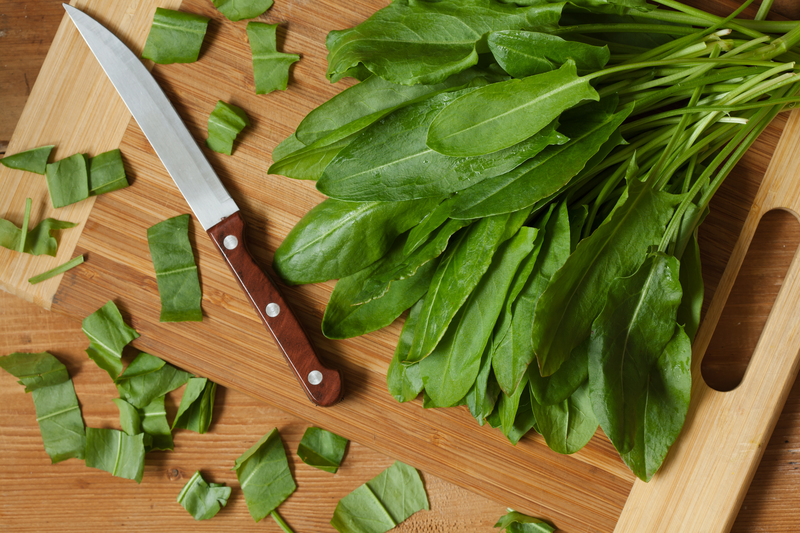Safeguard Your Plants from Extreme Weather Conditions
Posted on 22/05/2025
Safeguard Your Plants from Extreme Weather Conditions: A Comprehensive Guide
In recent years, extreme weather patterns--raging heatwaves, cold snaps, heavy rainfall, and prolonged drought--have become increasingly frequent. For avid gardeners and plant enthusiasts, these harsh conditions pose significant threats to plants' health and survival. Protecting your plants from extreme weather conditions is crucial to maintaining a thriving garden. In this detailed guide, we'll explore proven tips and strategies to safeguard your plants, ensuring they not only survive but also flourish, no matter what Mother Nature throws their way.

Understanding the Threats: How Extreme Weather Impacts Plants
From sudden frosts to sweltering heat, extreme weather events can stress or even kill your beloved plants. Plant stress opens the door to pests and diseases, stunts growth, and may permanently damage foliage, stems, and roots. Understanding how different weather extremes affect your garden is the first step to effective protection.
Heatwaves and Drought
- Rapid evaporation of soil moisture leads to water stress.
- High temperatures can scorch leaves and weaken plant structure.
- Prolonged heat may disrupt photosynthesis and nutrient uptake.
Cold Snaps and Frost
- Subfreezing temperatures cause cell damage in tender plants.
- Frequent freeze-thaw cycles can crack stems and roots.
- Late spring frosts can destroy new blossoms and shoots.
Heavy Rainfall and Flooding
- Soil saturation suffocates roots and leads to rot.
- Standing water can wash away nutrients and seeds.
- Excessive moisture encourages fungal and bacterial diseases.
General Principles to Safeguard Your Plants
While each type of extreme weather requires specific countermeasures, certain universal safeguards enhance overall plant resilience:
- Choose resilient plant varieties: Opt for drought-tolerant, cold-hardy, or moisture-loving species according to your region and climate risks.
- Develop healthy soil: Rich, well-draining soil supports robust root systems capable of withstanding stress.
- Mulch: A thick layer of mulch helps regulate soil temperature, conserve moisture, and prevent erosion.
- Smart garden design: Shelter sensitive plants with windbreaks, shade trees, or fences. Raised beds improve drainage and minimize flood risks.
Protection Techniques for Heatwaves
During unusually hot weather, your garden is at risk of rapid dehydration and sun damage. Here's how to safeguard your plants from excessive heat:
Watering Strategies
- Deep, infrequent watering: Water deeply early in the day, encouraging roots to grow downward for cooler, moister soil layers.
- Monitor soil moisture: Use a moisture meter or simply check the soil 2-3 inches below the surface. Keep it consistently moist but not waterlogged.
- Avoid watering during peak sun: Midday watering can cause leaf scorching and rapid evaporation.
Provide Shade
- Install shade cloth: Use lightweight fabric to filter direct sunlight over beds, especially for tender vegetables and annuals.
- Temporary structures: Erect umbrellas or garden canopies over vulnerable sections during the hottest spells.
- Group potted plants: Move containers to shaded patios, balconies, or beneath larger shrubs and trees.
Mulching and Soil Care
- Organic mulch layers: Apply 2-4 inches of straw, bark, or compost to lock in soil moisture and keep roots cool.
- Monitor for pests: Heat-stressed plants are more susceptible to insects. Inspect regularly and act quickly if pests appear.
How to Protect Plants from Cold and Frost
Cold snaps and early or late frosts are major threats to plant health, especially for delicate species. Below are effective strategies to safeguard your plants from freezing temperatures:
Insulation and Coverings
- Row covers and frost cloth: Drape breathable fabric over your plants in the evening to trap warmth without causing condensation.
- Old blankets and burlap: For emergency frost warnings, use household items to cover shrubs and small trees overnight.
- Individual plant protectors: Cloches, milk jugs with bottoms cut off, or bucket covers work well for single tender seedlings.
Soil and Watering Adjustments
- Water before a freeze: Damp soil holds heat longer than dry soil, providing root protection during sudden temperature drops.
- Add extra mulch: Pile extra mulch around the base of perennials and shrubs to insulate roots from freezing.
Long-term Solutions
- Plant location: North- and east-facing walls or fences offer natural windbreaks and moderate temperature swings.
- Cold frames and greenhouses: For year-round gardening in unpredictable climates, consider small structures for sensitive plants.
Shielding Plants from Heavy Rain and Floods
Downpours and flooding can rapidly undermine plant health by damaging roots, washing away nutrients, and fostering disease. Take these steps to safeguard your plants from extreme moisture:
Improve Soil Drainage
- Amend with organic matter: Blend compost or sand into heavy clay soils to improve drainage.
- Install raised beds: Elevate planting areas to reduce standing water and soil compaction.
- Avoid excessive watering: Monitor natural rainfall and only supplement if necessary.
Physical Barriers and Support
- Mulch: Apply heavier mulch to prevent soil splash, which transmits diseases to plant stems and leaves.
- Stakes and cages: Anchor tall or top-heavy plants to prevent breakage or lodging during storms.
- Temporary channels or berms: Direct runoff away from beds and take action to divert standing water.
Disease Management
- Inspect regularly: Remove any rotting leaves or stems to stop mold and blight.
- Promote airflow: Prune overgrown areas to allow plants to dry out faster post-storm.
General Best Practices for Plant Protection
- Stay informed: Regularly check local forecasts and have supplies ready for sudden weather events.
- Observe plant cues: Wilting, yellowing, or scorched leaves often signal upcoming stress.
- Create a resilient garden ecosystem: Mix plant types and use biodiversity to buffer individual stress.
Gardening Tools and Products to Safeguard Your Plants
Investing in the right gardening tools and protective products is critical to building a garden that withstands extreme weather:
- Quality mulch and soil conditioners
- Heavy-duty shade cloths and frost blankets
- Automatic irrigation systems to keep soil consistently moist in your absence
- Raised bed kits and soil amendments
- Stakes, cages, and plant ties for supporting weak stems in storms and wind.
- Greenhouses and cold frames for year-round protection of tender plants.
Special Tips to Safeguard Indoor Plants from Extreme Conditions
Indoor plants are not immune to the effects of harsh weather, especially during heatwaves and cold snaps. Here's how to protect your houseplants:
- Keep away from drafts and direct heaters: Place plants away from radiators, air conditioners, and drafty windows to avoid temperature shock.
- Monitor indoor humidity: Use a humidifier or pebble tray to counteract dry air during winter.
- Adjust watering schedules: In dry heat or during winter dormancy, alter watering frequency as needed.
- Rotate plants: Ensure all sides receive even light and avoid sunburn on leaves near windows.
Building Long-Term Plant Resilience
- Harden off seedlings: Gradually expose young plants to outdoor conditions to toughen them for unpredictable weather.
- Regular pruning and deadheading: Maintains air flow and reduces disease risk.
- Fertilize smartly: Correct nutrient deficiencies before the onset of harsh seasons, but avoid over-fertilizing during active weather extremes.

Frequently Asked Questions on How to Safeguard Your Plants from Extreme Weather
What are the most effective ways to protect young seedlings?
Seedlings are especially vulnerable to cold, heat, and heavy rain. Use cloches, mini-greenhouses, or floating row covers to shield them, and water gently to avoid dislodging fragile roots.
Will mulch really help during both hot and cold weather?
Absolutely. Mulch acts as insulation, moderating soil temperature in both directions--keeping roots cooler in summer and warmer in winter. It also helps preserve soil structure during heavy rain and drought.
How can I prevent wind damage during storms?
Stake or cage taller plants, use windbreaks like hedges or fences, and avoid heavily pruning foliage just before extreme weather, as denser canopies can buffer the wind.
Do plant covers need to be removed every morning after frost or intense sun?
Yes, always remove covers after the threat passes to prevent overheating and allow for proper air circulation and sunlight absorption.
Conclusion: Proactive Steps to Safeguard Your Plants from Extreme Weather
Taking timely, proactive measures to protect your plants from weather extremes is the hallmark of a successful, resilient garden. By understanding local climate risks, choosing the right plants, and implementing thoughtful safeguards such as mulching, covering, and site management, you can ensure your plants not only survive but thrive regardless of nature's unpredictability.
Remember:
- Stay vigilant with forecasts and garden inspections,
- Invest in protective gear and smart garden designs,
- Adapt your care routine according to shifting weather patterns, and
- Build a robust gardening toolkit for every season.
With these strategies, your garden will be better equipped to face any extreme weather condition. Happy gardening!



